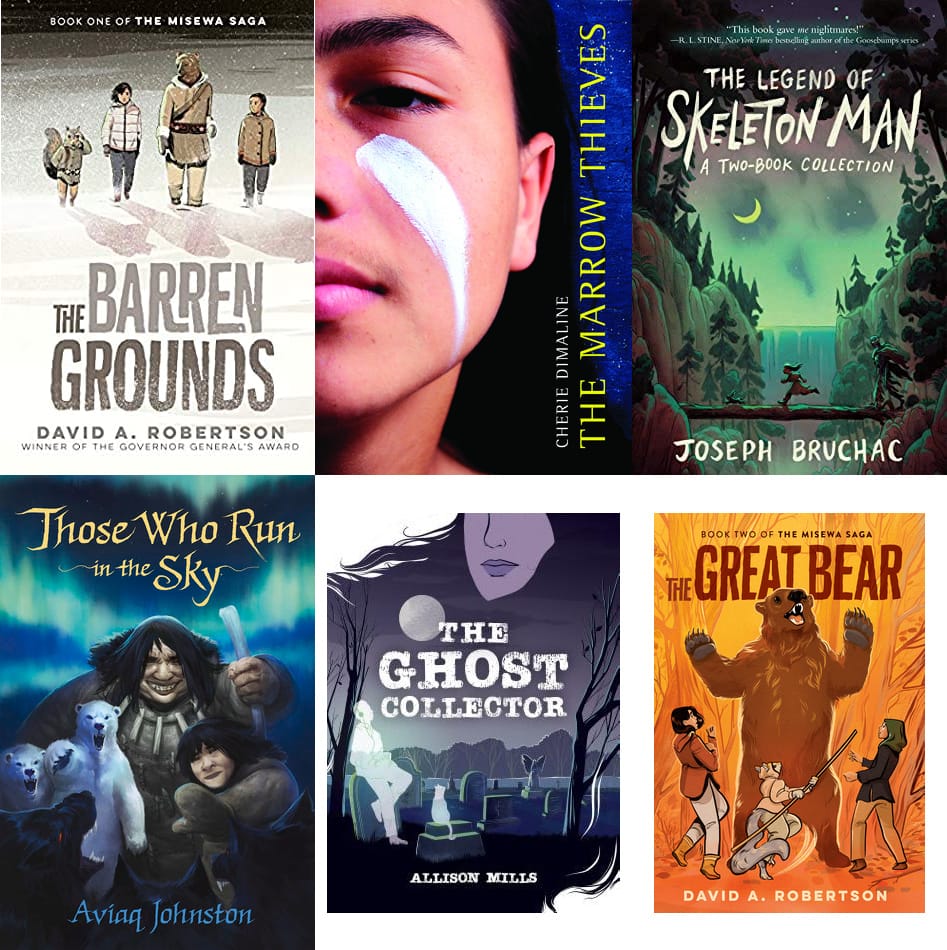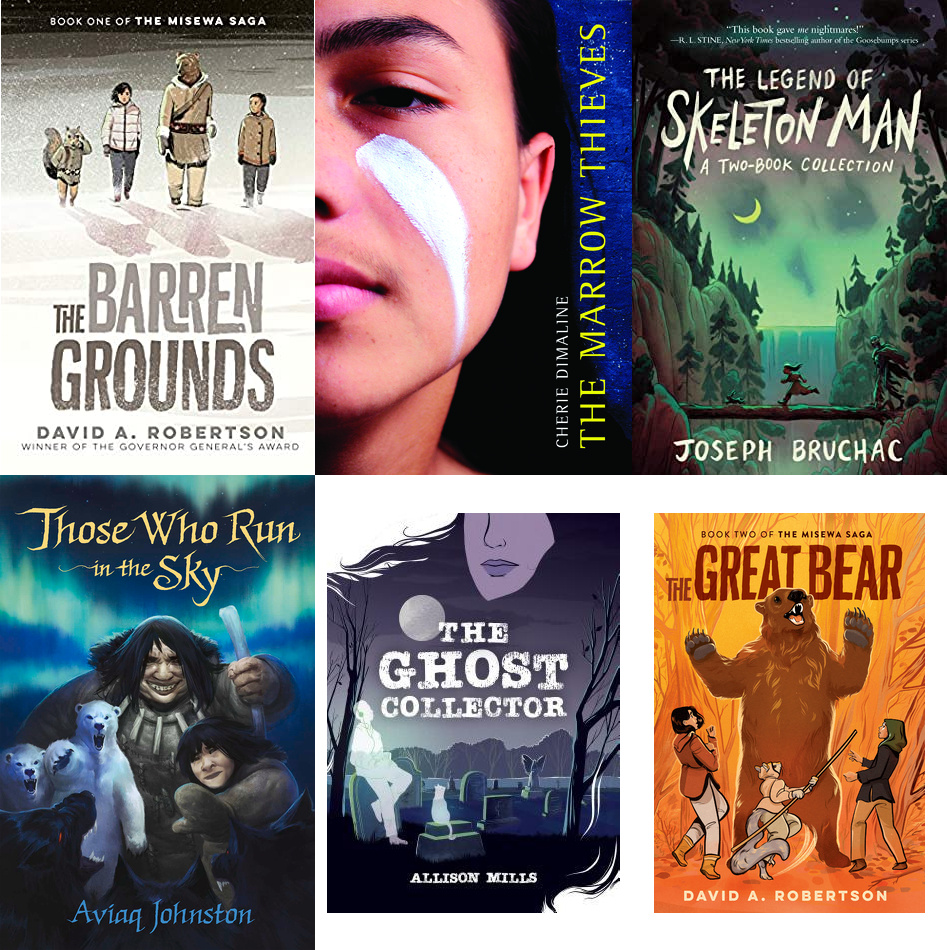Indigenous Storytelling Literature Circle

In the past, when teaching my students about Indigenous perspectives, I have often taken an approach that focuses on human rights. We spend time learning about colonialism in Canada and focus on texts that support that understanding. While I still think it is important to do this work, it has also become clear to me that this approach centers stories of trauma. Indigenous and non-Indigenous students need to read other kinds of Indigenous stories too. I want them to read stories where Indigenous characters are heroes, where they go on journeys, and learn about themselves. Stories of resurgence are vital.
For this reason, I developed a literature circle that focuses on contemporary Indigenous authors and that has the unifying element of storytelling. I endeavoured to pick books whose authors come from a variety of Indigenous backgrounds and to emphasize that these authors' distinct cultures are reflected in their work. I teach grade seven students, which means I am able to incorporate both middle grade and young adults novels.

- The Barren Grounds and The Great Bear, by David A. Robertson (Swampy Cree) - These first two books in the Misewa Saga focus on Morgan and Eli, two Indigenous kids living in foster care in Winnipeg. They discover a portal to another world and reconnect with their Indigenous culture.
- The Legend of Skeleton Man, by Joseph Bruchac (Nulhegan Abenaki) - This two book horror collection tells the story of Molly, a girl who must outwit the cunning and sinister Skeleton Man.
- The Ghost Collector, by Allison Mills (Ililiw/Cree and settler) - In this novel, the main character Shelly is learning from her grandmother how to help ghosts transition into the after life. However, when tragedy strikes, Shelly starts to see ghosts and death differently.
- Those Who Run in the Sky, by Aviaq Johnston (Inuq) - This novel tells the story of Pitu, a young hunter who is training to become a shaman. He gets lost in the spirit world and must find his way back home.
- The Marrow Thieves and Hunting By Stars, by Cherie Dimaline (Métis Nation of Ontario) - These young adult books focus on a dystopian world where Indigenous people are hunted because they are the only people who still have the ability to dream. It focuses on found family, resilience, and survival.
To start the unit, we discussed why storytelling is important and why it is important to hear stories with Indigenous perspectives. We watched videos of the authors talk about their books and why the stories are meaningful for them. As well, I read aloud Joseph Bruchac's forward to The Legend Skeleton Man, which discusses the many purposes of stories within his culture. This pre-reading work was important, as it helped students learn about the books they would read while also prompting them to consider Indigenous culture and perspectives as they read.
Early in the unit, we spent some time discussing culture. I wanted students to understand that culture consists of more than visible elements, like clothing or music. I wanted them to understand that worldviews, beliefs, morals, histories, and much more are part of culture, and these are reflected in stories. We did some initial research about the Indigenous groups that are represented in their novels, so they could better understand that each group has its own distinct culture and they could start to consider how the culture is represented in their book. In the future, I would like to improve this process, if possible by inviting Elders or Knowledge Keepers into our class.
Throughout the unit, we practiced reading strategies and participated in small group discussions to deepen our thinking. In particular, we wrote double-entry journals, where students identified key quotes and explained their thinking about the quote. This strategy is open-ended enough that it allowed for varied discussion about stories, culture, and other topics. Our read aloud mentor text was the short story Petropaths, which can be found in Take Us to Your Chief, by Drew Hayden Taylor (Ojibwe).

As students read their novels, I wanted them to have a stronger understanding of how oral storytelling traditions have influenced their novels. This would be another area in the future where I would like to invite Elders and Knowledge Keepers into the classroom. Since that wasn't possible this year, we listened to stories that Elders and Indigneous people have posted online instead, with students paying particular attention to the stories that come from the same cultural background as their novel. Tipiskawi Kisik: Night Sky Star Stories, by Wilfred Buck, is another important resource. I hope as students read their novel, they can make connections between the book and these oral stories.

To end the unit, I have asked students to think about the teachings that are found within their novel. This goes back to what we learned at the start of the unit, that stories are important expressions of culture and that stories help teach lessons. Next week, students will create a representation of a teaching found in their novel in the style of their choice. I hope to see a deeper understanding and appreciation of stories that reflect Indigenous culture.
